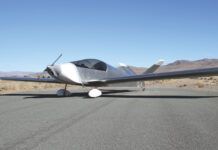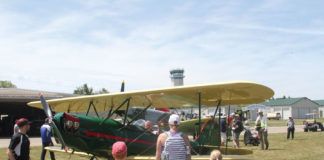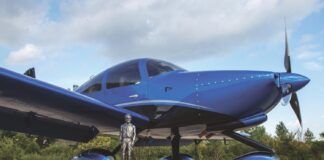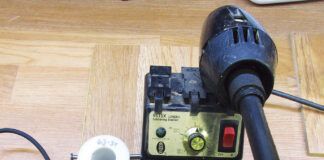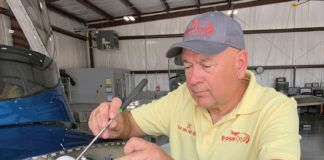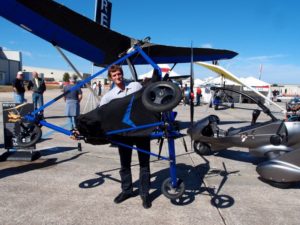
There was, admittedly, a large array of every type of LSA in attendance at the Light Sport Aircraft Expo January 19 to 22, in Sebring, Florida. Vendors were uniformly upbeat and claimed rising sales, despite prices ranging from mid-$80,000 to high-$180,000. A good many Cubs and Kitfoxes were on display along with myriad wannabes.
Dan Johnson, head of the Light Aircraft Manufacturer’s Association, reports that 16,000 attendees made this a record year, despite 5% fewer exhibitors on display.
arted.
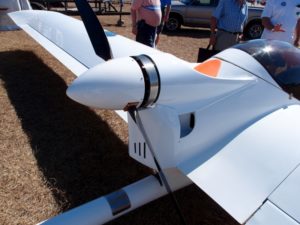
Another trend, and a heartening one, is for once-foreign-made aircraft to migrate to American manufacturers. There were several instances of this at Sebring, with at least one example having a European and an American maker competing with one another at comparable prices. Oddly resistant to this trend, Cessna is having its Skycatcher made in China, citing high manufacturing costs and taxes here.
Most reports missed the electric highlights of the show, and a few glimmers of even more exciting changes coming in the next year or so.
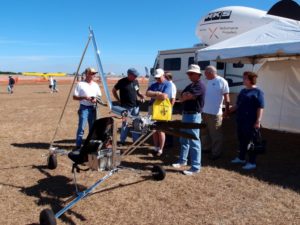
Looking at a display of user-installable airbags for aircraft, made in France and also available for motorcyclists and horse jumpers!, I chanced on Abid Farooqui of Tampa Bay Aero Sport, who showed the battery-powered version of the trike on which Gerard Thevenot flew across the English Channel in 2009 to commemorate the 100th anniversary of Bleriot’s flight.
Thevenot’s craft was very high-tech, employing three small hydrogen fuel cells for its energy, while the commercially available unit shown at Sebring manages with a Flytec 60 amp-hour LiPo battery pack that gives 40 minutes’ endurance.
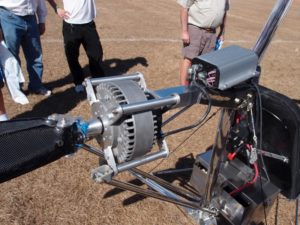
The whole package, including trike frame, Flytec’s HPD-13.5 (kW) motor, controller and single battery pack, weighs little enough for Farooqui’s partner, Jean-Luc Rousseau, to lift the little trike for a photo op. Rousseau is Gerard Thevenot’s son. The price is also light, $22,000 for the trike and motor assemblage with the same type of La Mouette wing used in the cross-channel flight. Total weight, Rousseau says, is 176 pounds. Buyers can add a second 22-pound battery to double endurance and still stay within LSA and ultralight limits. A two-stroke-powered version will cost $16,000, but it lacks the panache and quietude of the electric trike.
Farooqui explained that as battery technology improved, he hoped to introduce electric versions of the Revo Evolution line of two-seat trikes his company offers.
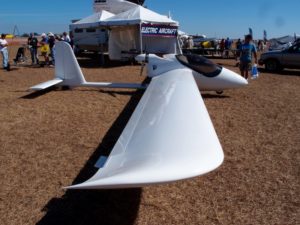
Randall Fishman (www.electraflyer.com) was there with his long-term electric trike and a new self-launching sailplane with a new ElectraFlyer motor he designed. The silvery cylinder puts out 22.5 kilowatts and weighs only 23 pounds. Housed in a swoopy air duct behind the roomy cockpit, it swings a folding two-blade prop. Fishman has computer numerical controlled (CNC) machining done in New York and motor windings crafted in Massachusetts; he uses a foreign source for the all-important magnets.
With motor, controller, batteries and carbon-fiber, aramid construction, the ready-to-go motorglider, FAR Part 103-ready, will sell for a projected $50,000, which is competitive with foreign entries of similar characteristics and performance.
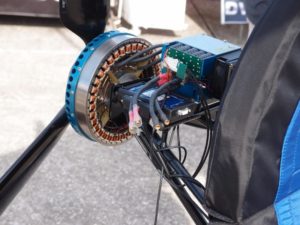
As I was about ready to talk with Michael Coates, the Master Distributor for Pipistrel, a film crew from a competing blog kidnapped him and was holding him prisoner in front of his demo Sinus. Luckily, Gregory Lawrence, an Associate Partner with Light Sport Aircraft, had time to discuss the Slovenian company’s coming attractions, which include an electric conversion of its upcoming Alpha Trainer, the under-$85,000 Light Sport two-seater. This price would include a nominally equipped lightplane with steam gauges in place of current EFIS practice, but with an economy of operation that should endear it to flight schools.
Efficient enough to do a claimed 2.5 gph while performing training circuits, the airplane would probably perform nicely on battery power, something for which Pipistrel demonstrated its competence with its win in the Green Flight Challenge. With this, ElectraFlyer’s and Tampa Bay’s offerings and Stephan Boutenko’s Alternair Amp looming, the future for electric LSAs may be brightening. Let’s hope for battery technology that will make it a grand reality!








